BIOLOGICAL DIVERSITY
Why do we need such a variety of species anyway? Would the ancient fish, the coelacanth of the deep ocean off the east coast of South Africa really be so great a loss? What effect does a variety of species have on the world ecosystem?
One marvelous effect they have is increasing the stability of ecosystems by means of feedback loops. In turn, feedback loops are the means by which biophysical processes reinforce themselves.
Self-reinforcing feedback loops characterize many interactions in Nature and have long been thought to account for the stability of complex systems. Ecosystems with strong interactions among components, which feedback loops contribute, can be complex, productive, stable, and resilient under the conditions to which they are adapted. But when critical loops are disrupted, such as by the extinction of species, these same systems become fragile and are easily affected by slight changes.
by
Chris Maser
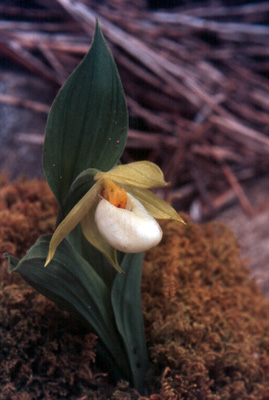

It's the variety of species, which create the feedback loops, that makes every species so valuable. Each species, by its very existence, has a shape and therefore a structure that allows certain functions to take place, functions that interact with those of other species to create a living system. A simple example is the hooded pitcher-plant in the Pine Barrens of New Jersey, which forms a vessel that holds enough water in spring for a particular mosquito to lay its eggs within the protected pool, and the pitcher plant rears the mosquito's young.
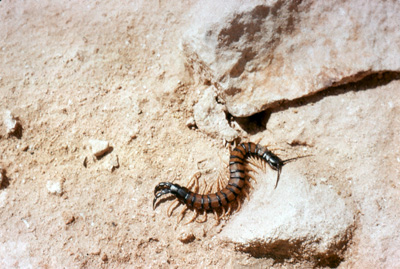

Although an ecosystem may be stable and able to respond "positively" to the disturbances in its own environment to which it is adapted, the same system may be exceedingly vulnerable to the introduction of foreign disturbances to which it is not adapted. We can avoid disrupting ecosystems supported by feedback loops only if we understand and protect the critical interactions that bind the parts of an ecosystem one to another and so create the system itself.
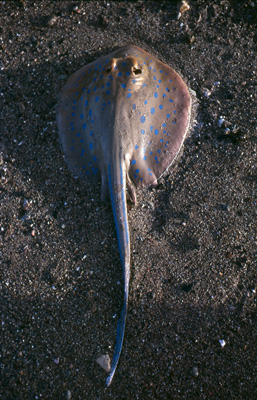

The diversity of plants and animals plays a seminal role in buffering an ecosystem against disturbances, and many of the ecological services the plants and animals perforem are indirect and thus hidden in their significance. By this I mean, a species that may have a small, direct effect on a biological process can, nevertheless, simultaneously have a large, indirect effect on the ecosystem as a whole if it in any way influences the abundance of other species with large, direct effects on the ecosystem.
Although ecologists often cite unknown, indirect effects of species on ecosystems as ample justification for protecting biodiversity, there currently is no theoretical framework within which to predict the relative importance of such indirect effects.1 If diversity of species is essential, how do they act in concert as a whole?
"For want of a squirrel, a seed was lost; for want of a seed, a tree was lost; for want of a tree, a forest was lost; for want of a forest . . . ." But what exactly does this all mean? It means that we could lose the tremendous biodiversity of the tropical rain forests without cutting a single tree! How?
To examine the synergism of self-reinforcing feedback loops, let's visit the rain forest in Gabon, Africa, where biologist Louise Emmons is fascinated by "its stunning complexity." In this forest, says Emmons, "You can stand anywhere and be surrounded by hundreds of organisms that are all 'doing something,' going about their living in countless interactions—ants carrying leaves, birds dancing, bats singing, giant blue wasps wrestling with giant tarantulas, caterpillars pretending they are bird droppings, and so on."²
In Gabon, Emmons found that nine species of squirrels all live together in one forest. Each is a different size; three species have specialized diets or habits, which leaves six that feed on nuts, fruits, and insects and could therefore be potential competitors for food. But a closer look reveals that three of the six species—a large, a medium, and a small—live exclusively in the canopy of the forest, where the largest one, a "giant" squirrel, feeds primarily on very large, hard nuts, while the smaller ones eat proportionally smaller fruits and nuts. The other three species—again a large, a medium, and a small—live exclusively on the ground, where they eat the same species of fruits and nuts as do their neighbors in the canopy, except they eat the fruits and nuts after they fall to the ground.
The forest in Gabon is evergreen, and fruit can be found on the trees throughout the year, but any one species of tree produces fruit for only a short period each year. To support three kinds of squirrels, eight kinds of monkeys, and eight kinds of fruit-eating bats (and so on) in the canopy, the Gabon forest must have a wide variety of species of trees and lianas (high-climbing, usually woody vines), each producing fruits and nuts in its own rhythm. The varying sizes of the fruits and nuts can support different sizes of squirrels with different tastes, whereas these same fruits and nuts when they fall to the ground can feed a whole analogous array of species.
But just how rich in species is a tropical rain forest? A 2½-acre (1 hectare) plot acres near Iquitos, Peru, hosted an incredible 283 species of trees over four inches in diameter in 1989. There were 580 trees of this size in the two-and-a-half-acre plot, which means there was an average of only two individual trees per species, and an astounding 58 species among the first 65 individual trees counted.
Worldwide, tropical rain forests seem to have from about 90 to 283 species of large trees within every two and a half acres, and this is not counting the other plants and the animals. Even the "poorest" of tropical rain forests have an average of about five individual trees per species every two and a half acres.
In contrast, a dry tropical forest, such as occurs in northern India, has about half as many species of trees as does a wet, tropical forest. And the richest forests of the United States have about twenty species of trees over four inches in diameter, with an average of about thirty individuals per species, in each two and a half acres of ground. But most temperate forests are much poorer than this.
So it seems clear that tropical rain forests are amazingly rich in kinds of trees. But not just any trees: especially those trees whose fruits are eaten and dispersed by birds and mammals. Not surprisingly, therefore, tropical rain forests also are rich in types of mammals and birds. But not just any mammals and birds: especially those that eat fruits and disperse their seeds.
There are, for example, 126 species of mammals within a single area of forest in Gabon and 550 species of birds within a single lowland site in the Amazon basin of Peru. Further, the life cycle of each species is interdependent with—and thus dependent on—the life cycles of the other species. The enormous number of vertebrate animals appears to be supported by the large number of species of plants acting as sources of food the year 'round.
If all this biodiversity is to be maintained, each individual tree must succeed in leaving offspring. Seeds and tender, young seedlings are amongst the richest foods available, and their succulence greatly increases their chance of begin eaten by the large numbers of hungry forest animals searching for nutriment around the bases of fruit- and nut-bearing trees. Likewise, such organisms as fungi, worms, and insects soon accumulate, where the seeds and seedlings are concentrated, and they spread from one seed or seedling to another.
Under such circumstances, seeds carried away from such concentrations of hungry organisms are more likely to succeed in germinating. Another major benefit of seeds being carried away from the parent tree is the availability of a wide variety of places with different conditions into which a seed is likely to fall. A new condition might offer a pocket of better soil on a mound created by termites, or in a spot where a dead tree has created a hole in the canopy, a hole that emits sunlight.
Many trees in the tropical rain forests, especially those germinating in the dark understory, have large seeds that carry enough stored energy to put out leaves and roots without much help from the sun. Such fruits and seeds are often so large that only proportionately sized birds and mammals can swallow or carry them. In Gabon, for example, monkeys dispersed sixty-seven percent of the fruits eaten by animals in Emmons's area of study.
Seed-dispersing animals, like large birds and large monkeys, are the most important animals for replacing the large trees and lianas of the forest canopy and thus helping them survive. Those animals are, however, the first species to disappear when humans hunt them for food. These species, along with elephants, have been hunted so heavily that have they either been drastically reduced in numbers or eliminated completely over vast areas of African forest, and the situation in the tropical rain forests of Central and South America is much the same.
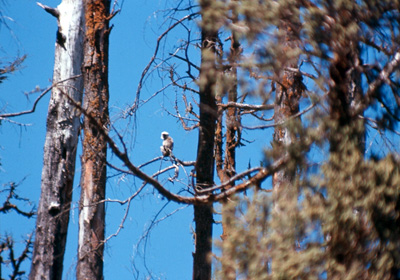
A common langur near the upper edge of the forest an elevation 11,500 feet (3,505 meters) on Phulung Ghyang, in the Himalayas of Newakot District, Nepal.
Foresters, for the most part, have overlooked the whole subject of the way the interdependency of plants and animals affect biodiversity of a plant community. Elephants of the Ivory Coast, for example, disperse the seeds of 37 species of trees. Of those, only seven species had alternate ways of being distributed—by birds and monkeys. In one study area, out of 201 individual trees, elephants dispersed 83 species.
In one forest, where humans had eliminated elephants a century earlier, few juvenile trees of the elephant-dispersed species were left, and the two major species had no offspring at all. One of these two species just happens to be the single most important tree for the two largest squirrels that Louise Emmons studied in Gabon—the one that eats the large, hard nuts in the canopy and the other that eats the same nuts once they've fallen to the ground.
Once the large species of birds and mammals are gone, the stunningly rich tropical rain forests will change and gradually lose species of trees, lianas, and other plants. Smaller, wind-dispersed seeds will replace the large seeds dispersed by large animals. Those species of plants whose seeds grow in the shaded understory will not survive, and the land will gradually be forested by fewer, more common species.2
As the forests become poorer in species of plants, the numbers and kinds of birds, mammals, and other creatures will decline accordingly. All the complex, interconnected, interdependent feedback loops will gradually simplify. The species of which the feedback loops are composed will be lost forever—and the feedback loops with them. This is how the evolutionary process works. Ecologically, it's neither good nor bad, right nor wrong, but those changes may make the forest less attractive, less usable by species, such as humans, that used to rely on it for their livelihoods and for products. So, if we want to think about the survival of humans, we have to think about all interrelationships of animals with plants.
The same types of self-reinforcing feedback loops that take place in tropical rain forests occur also in the temperate coniferous forests of the world, and they represent the same four basic elements of diversity: genetic, species, structural, and functional. Genetic diversity is the way species adapt to change; it is the hidden diversity that is so often subjected to "secret extinctions," the ones we don't notice. The most important aspect of genetic diversity is that it can act as a buffer against the variability of environmental conditions, particularly in the long term. So healthy environments can act as "shock absorbers" in the face of catastrophic disturbance.
Here looms a critical concept: the past function of an ecosystem determines its present structure, and its present structure determines its future function. This means that structure is defined by function and function is defined by structure! So as we alter the composition of species in an area, so we at the same moment alter its function in time. Over time, this new arrangement of species will respond to conditions differently than the original arrangement of species would have.
Thus, as we lose species, we lose not only their diversity of structure and function, be it direct or indirect, but also their genetic diversity, which sooner or later results in complex ecosystems becoming so simplified that they will be unable to sustain us as a society. Here a lesson from Easter Island is instructive.
Easter Island is a tiny, 43-square-mile piece of land in the South Pacific, 2,400 miles (3,862 kilometers) off the coast of South America. The oldest pollen dates on the island go back some 30,000 years, long before the first people, seafaring Polynesians, arrived. At that time, the island was forested.
The Polynesians settled on the island in about 400 A.D. They began gradually to clear the land for agriculture, and they cut trees to build canoes. The land was relatively fertile, the sea teemed with fish, and the people flourished. Their population rose to about 15,000, and the culture grew sophisticated enough to carve the giant statues that have since become famous. The people eventually also cut trees to provide logs for transporting and erecting those hundreds of eerie statues, or moai, some of which are about 32 feet (9.8 meters) high and weigh as much as 85 tons (77 metric tons).
Unfortunately, when the trees were cut, they didn't grow back. Deforestation began about 1,200 years ago, a few hundred years after the people arrived, and was almost complete by 800 years ago. The people of Easter Island also exploited many of the island's other resources, such as its abundance of birds' eggs. The result was an ecological disaster.
The people had cleared so much of the forest that they were without trees to build canoes for fishing. They probably also had exploited the eggs of the sooty tern to the point that the bird no longer nested on the island. And deforestation led to erosion of the soil and reduced yields of crops.
The downward spiral of culture on Easter Island had begun. Fewer fish, eggs, and crops led to a shortage of food. Hunger in turn brought warfare, even cannibalism, and the whole civilization was pushed to the brink of collapse. By the time European explorers arrived in the 1700s, only 4,000 people remained on the island, and the culture that produced the statues had completely disappeared.
Today, all we can do is marvel at the remains of the Easter Island Culture—statues that once stood erect on specially built platforms, others that lie abandoned between the volcanic quarries of their origin and their planned destinations, and still others, which remain unfinished in the quarries.3
Thus, any social strategy aimed at protecting the presence and evolution of biodiversity, in all its aspects, is a critically important step toward ensuring an ecosystem's ability to adapt to change in a way that is compatible with human existence.
Diversity counts!
We need to protect it, an any cost!
ENDNOTES
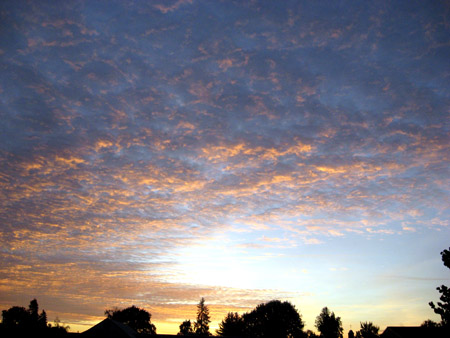
©Chris Maser 2009. All rights reserved.